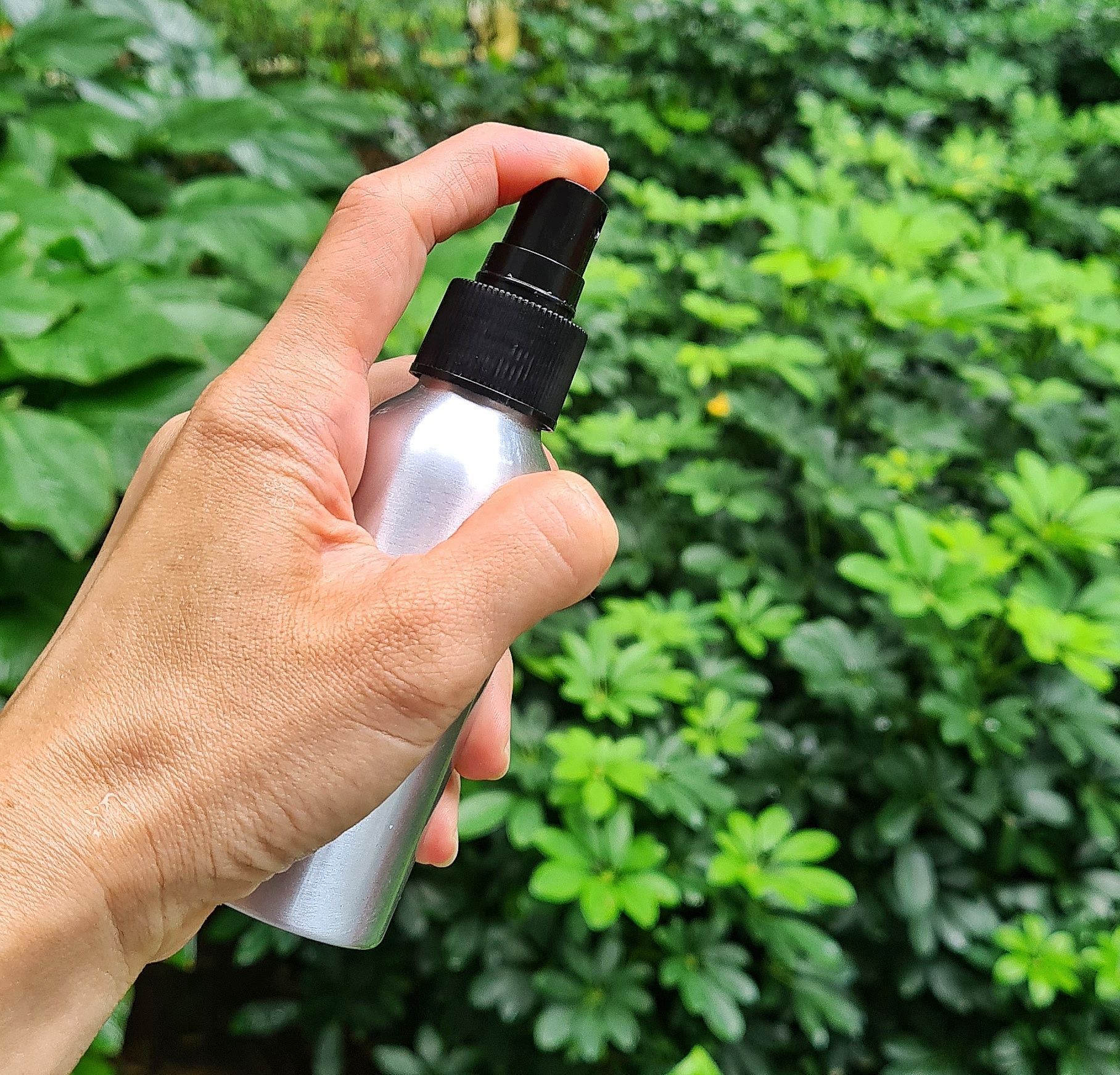We are often in the outdoors, either eating at balcony alfresco-style, exercising in the park or visiting outdoor playgrounds. But mosquitoes love us, especially me. So I am always the first person to feel the itch. Hence we use a lot of insect repellent.
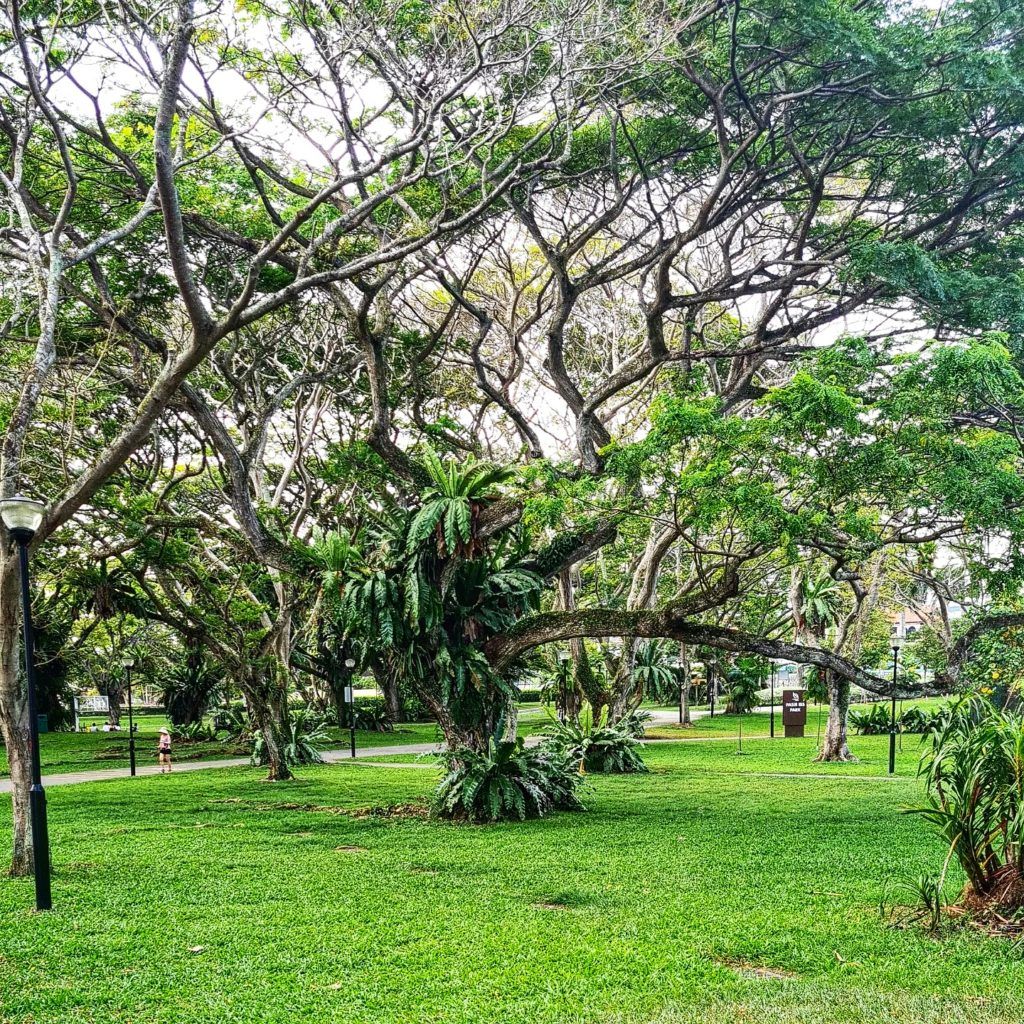
I find the OFF insect repellant the most effective amongst the commercially available repellents with DEET. However, whenever I used the product, it irritated my sensitive airways tremendously, even when sprayed away from my face. The chemical compounds in the product probably did not work well for me. Hence I had to look for alternatives.
Babyganics’ insect repellent became my next favourite. It smells great though it was not as effective as OFF. I often needed to re-apply because the product is DEET-free and uses only natural plant-based repellent.
DEET, according to the US National Library of Medicine, remains the most effective repellant against insects as it is the longest-lasting and it interferes with the receptors on a mosquito’s antennae, which deters mosquitoes from landing on the skin and biting.
After getting acquainted with essential oils, I started adding drops of lemongrass oil into the Babyganic container to improve the effectiveness of the insect repellent.
However, this natural solution is rather oily since Babyganic insect repellent consists of only plant oil and essential oils. This leaves our skin oily, which is at times, unsafe for playground climbing as the kids’ little hands may be too greasy to maintain a firm grip on the climbing towers.
Making Our Own Insect Repellent Blend
Today, I have moved away from commercial brands and created my own concoction of natural mosquito repellent recipe that works well for us as it not only repels bugs, it treats bites. This means I only bring a bottle of solution out when we are in the park. The recipe is not only super easy, but I have control over the ingredients I use.
The insect repellant recipe that I am sharing here is roughly 2% diluted, less greasy, smells awesome and remains effective for at least 2 hours in my personal experience. Essential oils are volatile liquids, hence they evaporate easily. Most mosquito repellant recipes made using essential oils require regular reapplication every couple of hours.
In comparison, OFF!® FamilyCare Insect Repellent IV, which contains 7% DEET is effective for up to 2 hours, while Off! Active Insect Repellent which contains 15% DEET is effective for up to 6 hours according to their packaging.
So if you opt to use a DEET-free product, do ensure that you reapply every 2 hours to ensure that mosquitoes and bugs stay away from you.
Homemade Mosquito Repellent Recipe for Family Use
Lemongrass oil 10 drops
Peppermint oil 10 drops
Tea tree oil 10 drops
Lemon eucalyptus 10 drops
Glycerin 10ml
Witch Hazel 50ml (optional)
Water (balance to fill up the bottle)
100ml aluminium spray bottle
(click onto these links to get your supplies from Lazada *)
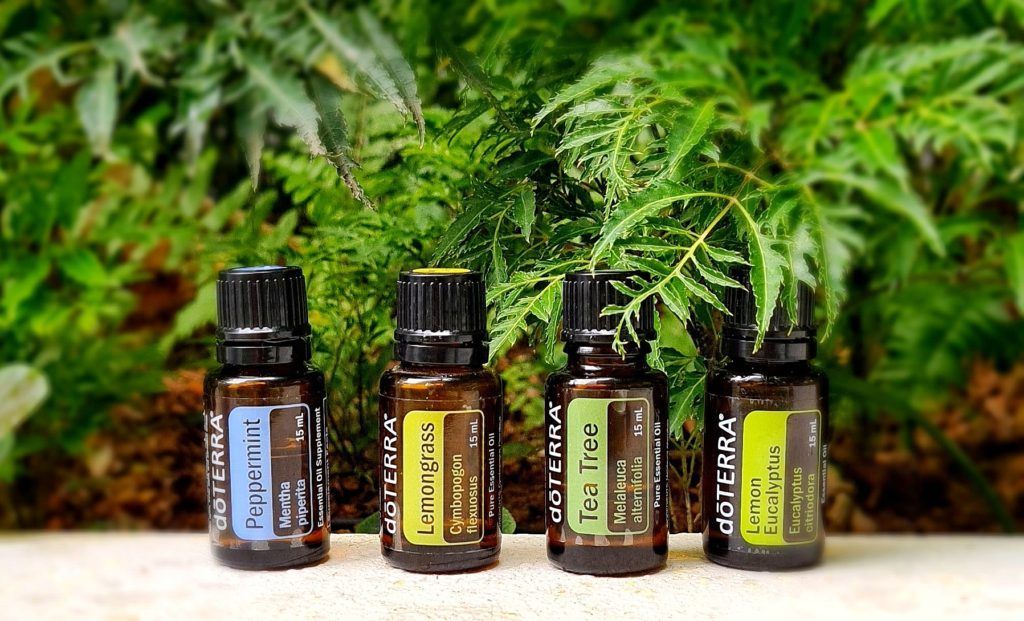
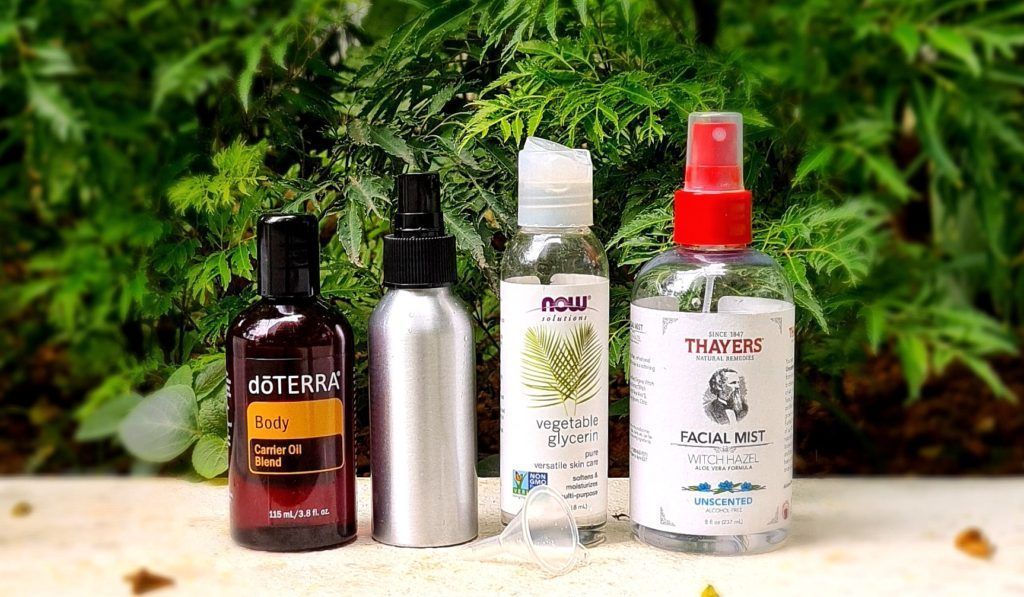
Method
First, mix all the essential oils and glycerin in a glass apparatus. Next, add the carrier oil and mix them well.
Use a mini-funnel to transfer the oils into the spray bottle.
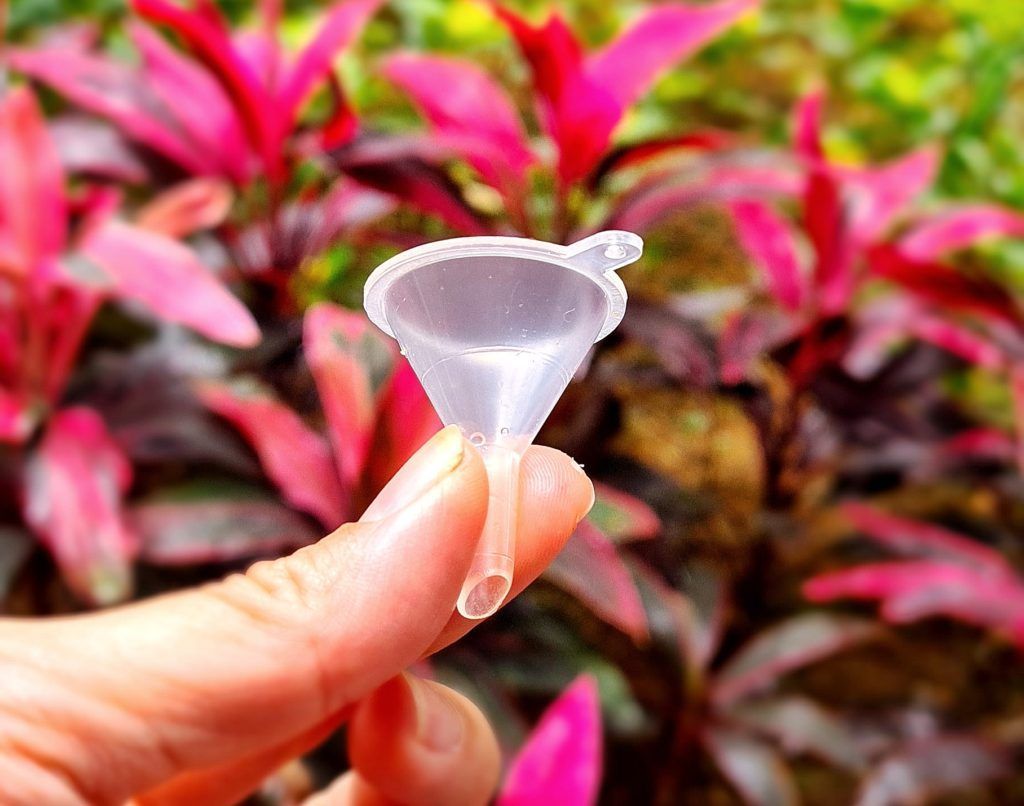
Last, add witch hazel/water to fill up the bottle to 5/6 full. You need to reserve some room for the straw under the spray head. Otherwise, the solution will overflow when you fix the spray head onto the bottle.
Shake the mosquito repellent recipe well before each use.
Why I Use These Ingredients
Past research on the essential oils included in my recipe have shown that these oils are likely effective in repelling mosquitoes. In fact, Lemon Eucalyptus and certain types of Lemongrass may go well together for larvicide as well.
Peppermint Essential Oil
Peppermint works against all types of mosquitos and helps with easing itch too. The key ingredient in Mopiko is menthol, which is derived from peppermint.
Peppermint has a cooling effect and is often used as home remedy to reduce mild fever. Hence, applying peppermint in our hot tropical climate when playing outdoor may produce a pleasantly cooling sensation to our skin too.
Lemongrass Essential Oil
Lemongrass is not only known for repelling insects, it is well-known for its antiseptic, antimicrobial, and anti-inflammatory properties.
Tree Tree Oil
Teatree oil is awesome for treating skin problems and is known for its antiseptic, antimicrobial, and anti-inflammatory properties. In my recipe, I am using Melaleuca Alternifolia. Research has also shown that it may be effective in repelling mosquitoes.
We often use tea tree oil to treat skin issues too, hence it is a must for me to include tea tree oil in my concoction. It has the ability to treat cuts and insect bites as well when we are outdoors. One bottle of solution will do the trick. I don’t have to bring more.
Fractionated Coconut Oil
Fractionated Coconut Oil is often used as a carrier oil to dilute essential oils before applying to our skin. It is extremely important to dilute heavily the essential oils mentioned herein because many of these oils are extremely unpleasant if used on the skin neat. The burning sensation from pure lemongrass oil is unbearable, even for me, let alone the kids.
Moreover, carrier oils help to reduce the volatility of the essential oils and thus allow the latter to last longer.
If you prefer a stronger concoction, feel free to reduce the amount of carrier oil to 15-20ml. If little kids are sharing the spray, it is better to start with 25ml of carrier oil to be on the safe side.
Glycerin
Glycerin similarly does not repel bugs. It works wonderfully as a cleanser, locks in skin’s moisture, and also ease irritation from scratches, blemishes, itches and hives. While we do not need so many ingredients to help ease the itch from bugs, glycerin combines well with essential oil and helps us to have a more even application of essential oils on the body.
However, too much glycerin leaves our skin sticky. Imagine applying some sticky liquid over your limbs when you are already sweating in this humid climate. For me, 10ml of glycerin suffices. You may adjust the quantity to your liking.
Witch Hazel Water
Witch Hazel Water comes from the witch hazel plant. It is often used on the skin for soothing sensitive skin as well as easing inflammation, hence it is often used as one of the ingredients in natural facial toners.
Many DIY insect repellents include witch hazel water in their recipe. However, it does not repel bugs. It is an astringent for treating cuts and bug bites. While it is a good-to-have ingredient in mosquito repellent recipes, it means additional cost. Hence, I find this ingredient an option rather than a must-have. I tried using the same recipe without the witch hazel and it repels bugs fine too.
Aluminium Spray Bottle.
We typically use amber glass bottles to store essential oils. Pure essential oils melt plastics. Try it on a thin mineral water bottle and you will see the plastic disintegrating over time. However, as the recipe here is for outdoor use, I prefer to use an aluminium bottle to hold the liquid to avoid potential glass breakage. Essential oils do not break down aluminium. Moreover, the solution is diluted with many other ingredients. Hence an aluminium spray bottle suits my needs better.
Enjoy my homemade mosquito repellent recipe? Please like my Facebook Page to support me.
Disclosure: This post contains affiliate links where I get to earn a tiny commission at no additional cost to you if you purchase something from them. The links to the essential oils direct you to my shop.
You may like these posts too:
My Review on the Magic Seal Mosquito Net
Using Tea Tree Oil for our Ailments
Homeschooling the Tots – the Fascinating Tiny Bugs
Exploring the Chestnut Nature Park (North) with young kids
The Mega Pasir Ris Park Playground
Sterra Breeze Air Purifier Review – A Necessity At Home
Defending ourselves against insect invasion
Tineco Floor One S3 review – A Wonderful Help For Busy Families
